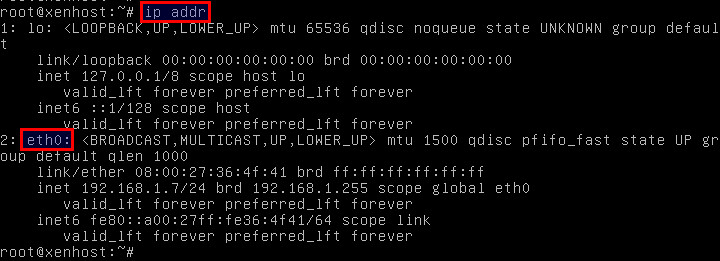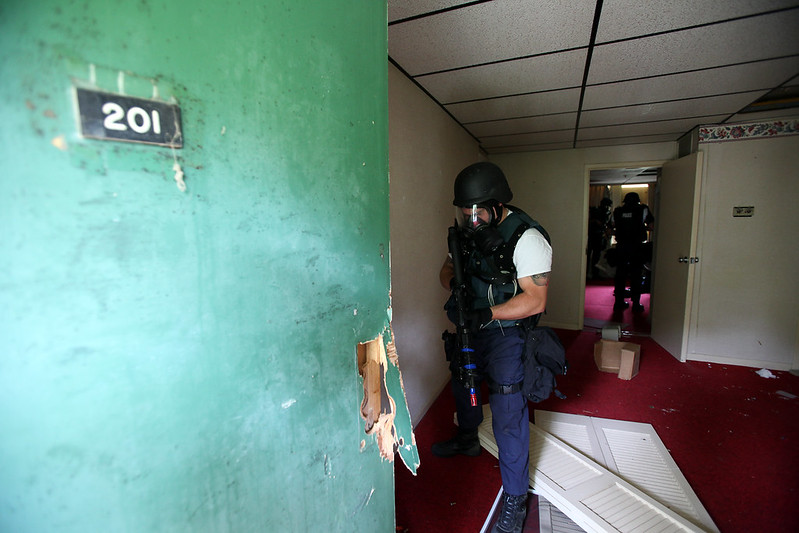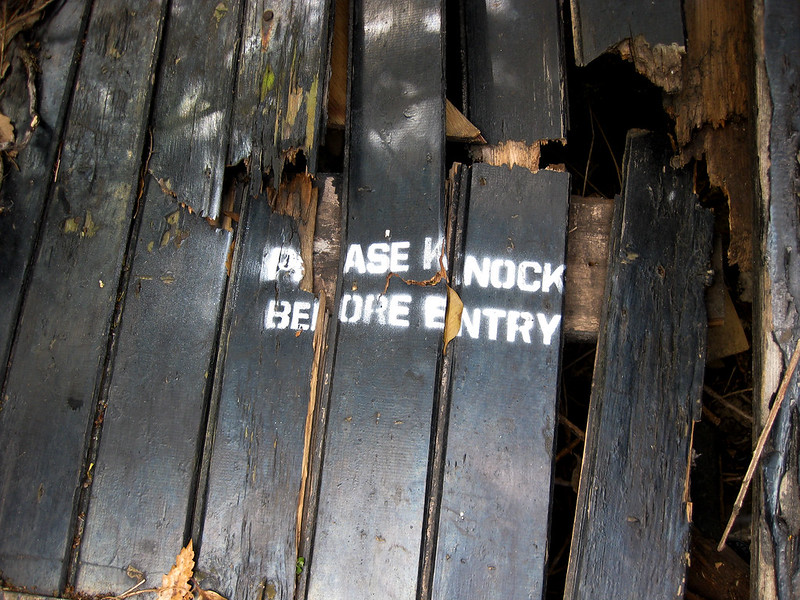This week’s top three summaries: R v Labelle, 2019 ONCA 557, R v Strathdee, 2019 ABQB 479, and R v Murdock, 2019 NSPC 15.
R v Labelle (ONCA)
[July 3/19] S.8 Charter - Reliance on Crown Theory to Establish Reasonable Expectation of Privacy - 2019 ONCA 557 [Reasons by A. Harvison Young J.A., with R.G. Juriansz J.A., David Watt J.A. concurring]
AUTHOR’S NOTE: This case demonstrates the folly of allowing the Crown to take inconsistent positions between the Charter application and the trial proper. Jones was the answer here, but instead at trial the Crown successfully maintained that the appellant had "no reasonable expectation of privacy" in a dwelling and then switched gears in the trial to successfully argue that the dwelling was actually the appellant's and the trial judge convicted him finding he had knowledge and "control" over drugs found within the unit. The effective intellectual dishonesty of the approach in the trial court is astounding. On appeal, the matter was overturned because Jones should have resolved expectation of privacy issue in the first place.
Pertinent Facts
"The police received information from a confidential informant that an individual named "Rob" was growing marijuana and was in possession of firearms and other weapons at an apartment in Hamilton, Ontario. When the police executed a search warrant at that apartment on July 27, 2016, they discovered the appellant wrapped in a towel having just showered. They also found several firearms, magazines, rounds of ammunition, and other weapons. The appellant was charged with a number of firearm possession offences and breaches of a firearm prohibition order." (Para 1)
"The defence called just one witness on the voir dire — In cross-examination, Crown counsel elicited evidence that the appellant was not living with her at the apartment, had never lived at the apartment, and was renting a room down the street. Ms. Robins explained that the appellant stored most of his belongings at her apartment because the room he rented did not have sufficient storage. At the time that the search warrant was executed, she testified she had moved out of the apartment because of issues with her landlord and because of a violent disturbance at a neighbouring residence." (Paras 4-5)
"The trial judge accepted the Crown's submissions and agreed that the appellant had no standing to challenge the warrant. She found that there was no evidence that the appellant had a subjective expectation of privacy in the apartment. She also found, applying the Edwards factors, that any such expectation would not have been reasonable in the circumstances. The trial judge dismissed the Charter application on this basis, and did not address the merits of the appellant's challenge to the sufficiency of the ITO." (Para 7)
"The parties agreed to apply the evidence from the voir dire to the trial proper....The Crown argued that Ms. Robins' evidence — to the extent it suggested the unit was her apartment — should be disbelieved. When asked by the trial judge how the Crown could take this position in light of the position it had taken on the voir dire with respect to the appellant's standing to challenge the warrant, Crown counsel responded that "the Crown's position has always been that it's [the appellant's] apartment". He explained that the Crown had only taken the position that the appellant lacked standing on the voir dire because the appellant had called evidence that negated standing." (Para 8)
"Thus, [the trial judge] found that the Crown had established the elements of knowledge and control over the firearms necessary to ground a finding of guilt on the possession of firearms charges" (Para 10)
Charter s.8 - Inferring Reasonable Expectation of Privacy from Crown's Theory
"For the following reasons, I am satisfied that Jones governs this case. The appellant was entitled to rely on the Crown theory — and, in particular, the Crown's position that this was the appellant's apartment, not his girlfriend's apartment — to establish facts in furtherance of his s. 8 Charter claim. The trial judge erred in not allowing the appellant to so rely on the Crown theory. This error infected the trial judge's analysis of whether the appellant had a subjective and objectively reasonable expectation of privacy in the apartment, such that he could challenge the validity of the warrant. I would therefore allow the appeal and order a new trial." (Para 15)
"The Supreme Court of Canada reached a different conclusion. Writing for a majority of the court, Coté J. held that that appellant was entitled to rely on the Crown's theory to establish that he authored the text messages and, in turn, to establish a subjective expectation of privacy in the messages. Justice Coté summarized her main conclusion on this point [in Jones], at paras. 9, 32-33, in the following terms:
I conclude that an accused mounting a s. 8 claim may ask the court to assume as true any fact that the Crown has alleged or will allege in the prosecution against him in lieu of tendering evidence probative of those same facts in the voir dire. In this case, Mr. Jones should have been permitted to rely on the Crown allegation that he authored the Text Messages, and his subjective expectation of privacy in the subject matter of the search is accordingly established.
.....
In my view, that is best accomplished by concluding that counsel for a s. 8 applicant may ask the court to assume as true for s. 8 purposes any fact that the Crown has alleged or will allege in the prosecution against him. In other words, where the alleged Crown facts, if taken to be true, would establish certain elements of the applicant's s. 8 claim, he or she need not tender additional evidence probative of those facts in order to make out those same elements. Although the entirety of the facts and the Crown theory may not be apparent at the time of the voir dire, the court may infer it from the nature of the charges. Alternatively, the court may encourage prosecutors to be forthright in regards to their theory." (Para 20)
"Turning then to the issue of whether Jones applies to the case at bar, I do not agree with the respondent's submission that Jones only applies in circumstances where the accused leads no evidence on the voir dire. It does not make sense as a matter of principle to restrict Jones as the Crown urges this court to do." (Para 23)
"The overriding point of Jones is that an accused should not be placed in the position of being forced to compromise his or her substantive defence to criminal charges in order assert standing to challenge the reasonableness of a search." (Para 24)
"While Jones arose in circumstances in which the accused led no evidence on the Charter voir dire, I do not read the decision as being limited to that situation. In this vein, Coté J. indicates that "an accused mounting a s. 8 claim may ask the court to assume as true any fact that the Crown has alleged or will allege in the prosecution against him in lieu of tendering evidence probative of those same facts in the voir dire" (emphasis added): at para. 9....The appellant tendered his girlfriend's evidence not to establish that it was his apartment, but rather to establish that she had a licence to possess firearms in furtherance of his attack on the sufficiency of the ITO. The Crown then elicited testimony inconsistent with its own theory that it was the appellant's apartment on cross-examination." (Para 26)
"...holding Jones does not apply in such a situation would place the defence in the very type of tactical dilemma that Jones seeks to obviate. The defence would be required to weigh calling witnesses and leading all evidence relevant to asserting a Charter breach (in addition to those facts disclosed by the Crown theory) against the risk that the Crown would elicit evidence in cross- examination inconsistent with the accused asserting a subjective and/or objectively reasonable expectation of privacy." (Para 27)
"There is no suggestion in Coté J.’s judgment in Jones that it was intended to apply only to informational privacy claims, or only to allow an accused to assert a subjective expectation of privacy. At several points in her analysis, she refers to s. 8 claims generally: see Jones, at paras. 9, 26, 32-33." (Para 29)
"This approach does not create automatic standing in territorial privacy cases. The point of Jones is that the accused can rely on the Crown theory to establish certain facts relevant to their s. 8 claim. The trial judge is still required to assess those facts in the “totality of the circumstances” to determine whether the accused had a reasonable expectation of privacy in a particular territorial space: see Edwards, at para. 45; see also R v. Reeves, 2018 SCC 56 (CanLII), at para. 28." (Para 31)
"For the foregoing reasons, I would allow the appeal and order a new trial on the remaining counts." (Para 31)
R v Strathdee (ABQB)
[June 26/19] Party Liability for Group on Group Violence - 2019 ABQB 479 [J.H. Goss J.]
AUTHOR’S NOTE: Navigating the law of party liability for group acts of violence can be tricky. Herein, Justice Goss does just that and provides a very useful summary for defence counsel in the process. Numerous credibility/reliability findings rendered the bulk of Crown evidence meaningless. However, DNA evidence established the presence of the accused at the scene and present during the bloodletting. What remained is an analysis of what that DNA evidence and medical examiner's evidence could mean. In the end, mere presence could not establish the requisite intent for party liability to fall on co-accused Nelson for murder, manslaughter, or aggravated assault.
Pertinent Facts
"The accused Tyler Gordon Strathdee is charged with second-degree murder in the death of Deng Tong, on or about February 22, 2015, at or near Edmonton, Alberta, contrary to s 235(1) of the Criminal Code, RSC 1985 c C-46. The accused Billy Joe Nelson is charged with manslaughter in relation to that same death, contrary to s 236(b) of the Criminal Code." (Para 1)
"Both accused are jointly charged with three counts of aggravated assault on Peter Akuai, Abdullahi Are and Hassan Dahir, each count allegedly arising on or about February 22, 2015, at or near Edmonton, Alberta, contrary to s 268 of the Criminal Code." (Para 2)
"A series of blood swabs and various articles of clothing were seized from within the Burnstick Suite. The DNA profiles of the following individuals were matched to the bloodstains and swabs located in the suite: Mr. Nelson, Mr. Dahir, Mr. Akuai and Mr. Are." (Para 9)
"On March 13, 2015, a series of exhibits were seized from a basement suite, rented by Curtis Allen, located at #102, 10650 102 Street (the Allen Apartment), including: a black-handled wrench (bloodstaining thereon matched the DNA profile of Mr. Nelson) from under a couch; a small machete-like knife; a Mastercraft-brand hatchet (DNA found thereon matched the DNA profile of Mr. Strathdee), both from a box in the north kitchen closet; and a number of swabs of blood, primarily from the laundry room (one of which matched the DNA profile of Mr. Kailek)." (Para 14)
"As I do not know whether the exculpatory evidence of Mr. Strathdee is true or false, I must consider whether, in the context of the evidence as a whole, I am left in reasonable doubt by his evidence about his role in the attack at the Burnstick Suite." (Para 96)
"Six witnesses provided evidence as to what transpired in the Burnstick Suite during the attack (Mr. Kailek, Mr. Phillips, Mr. Are, Mr. Dahir, Mr. Burnstick and Mr. Tocher) and two gave evidence with respect to what they overheard about what transpired in the Burnstick Suite (Mr. Viau and Ms. Dmytryshyn). I am entitled to accept all, some or none of a witness’s evidence: R v Nqumayo, 2010 ABCA 100 (CanLII) at paras 18 and 25. There were serious credibility and reliability issues with the evidence of all of these witnesses." (Para 97)
The trial judge went through the eye-witness evidence to the home invasion/attack and found all of the key Crown witnesses largely unreliable and untrustworthy. (Paras 105, 111, 122)
"After careful consideration of all the evidence, I am unable to decide whom to believe in regard to any evidence not corroborated by independent confirmatory evidence. Moreover, given my conclusions on the evidence of Mr. Kailek, Mr. Viau and Mr. Phillips, I am not confident that I can accept the Crown's version of events." (Para 125)
Analysis of Party Liability
"Unlawful act manslaughter is involuntary manslaughter. The mens rea of unlawful act manslaughter comprises the mental or fault element for the underlying unlawful act, together with objective forseeability of the risk of bodily harm that is neither trivial nor transitory in the context of a dangerous act. Forseeability of the risk of death is not required: R v Creighton, [1993] 3 SCR 3, 1993 CanLII 61 at 44-45 (CanLII) and R v Yumnu, 2010 ONCA 637 (CanLII) at para 232." (Para 130)
"The Crown has not proved beyond a reasonable doubt that either Mr. Strathdee or Mr. Nelson caused Mr. Tong’s death." (Para 131)
"The Crown argues this Court can find Mr. Strathdee guilty of manslaughter as a joint or coprincipal in the group assault that resulted in Mr. Tong’s death based on Mr. Strathdee’s admissions against interest." (Para 132)
"Where two or more persons participate in a group assault, each person becomes responsible for any act of the group such that the “blow of one is the blow of all.” It is not necessary that each participant agree to carry out a common purpose; only common participation is required. Common participation is characterized by multiple assailants acting together in pursuit of a common object. When a person participates in an assault on a victim along with others, that person must accept the consequences which flow from this group action. Liability for murder/manslaughter is often grounded in the common participation of joint principals under s 21(1)(a) of the Criminal Code: R v Cabrera, 2019 ABCA 184 (CanLII) at paras 78 and 79." (Para 134)
"Where multiple accused act in concert, there is no requirement that the trier of fact decide which accused actually struck the fatal blow. Who struck the killing blow is legally irrelevant: R v H(LI), 2003 MBCA 97 (CanLII) at paras 20 – 23. The Alberta Court of Appeal acknowledged in Cabrera that when death results in the course of a group assault, it is often not definitively known which assailant delivered the fatal blow. Causation is proven once the trier of fact is satisfied the victim died as a result of the assault and the accused participated in it. In these circumstances, an accused is liable as a joint principal for murder or manslaughter depending on the person’s subjective intent irrespective of whether he or she delivered the fatal blow: para 80." (Para 135)
"The evidence of Dr. Brooks-Lim is that “examination of [Mr. Tong’s] body revealed a single stab wound to the front right side of the chest.” Death is attributed to that stab wound to the chest which injured the heart and led to “massive blood loss and cardiac dysfunction.” There is no evidence of others applying force to Mr. Tong prior to his death. The evidence of Mr. Kailek that he saw Mr. Strathdee stab Mr. Tong seven times, including in the face, is unbelievable given Mr. Tong only suffered one stab wound and it was to the chest. As well, Mr. Kailek admitted he lied to Detective Tedeschini when he told him this. The only other injury noted by Dr. Brooks-Lim was a left dorsal injury. There is no evidence of when this injury was sustained. This is not a classic scenario where multiple persons assaulted Mr. Tong at the same time." (Para 137)
"I find Mr. Strathdee and Mr. Nelson not guilty of manslaughter as a joint or co-principal in the death of Mr. Tong." (Para 138)
"To be found guilty of a crime by abetting, depending upon the circumstances, something more than mere presence at the scene of the crime is required, such as prior knowledge of the principal offender’s intention to commit the offence or attendance for the purpose of encouragement: Dunlop and Sylvester v The Queen, 1979 CanLII 20 (SCC), [1979] 2 SCR 881 at para 31. Encouragement could be intentional or unintentional. A man may unwittingly encourage another in fact by his presence, by misinterpreted words or gestures or by his silence or by non-interference. Where he encourages intentionally by expressions, gestures or actions intended to signify approval, he would be abetting: R v Black, 1970 CanLII 1022 (BC CA) at para 88 and 89." (Para 141)
"An accused who abets in the killing of another without the requisite intent for murder will be guilty of manslaughter if the unlawful act which was abetted is one which he knew was likely to cause some harm short of death, or is one which a reasonable person in all the circumstances would have foreseen as causing bodily harm of a non-trivial or non-transitory nature: H(LI) at para 29. It is not necessary that the risk of death be foreseeable. As long as the unlawful act is inherently dangerous and harm to another which is neither trivial nor transitory is its foreseeable consequence, the resultant death amounts to manslaughter: R v Jackson, 1993 CanLII 53 (SCC), [1993] 4 SCR 573 at paras 20 and 21." (Para 142)
"There is no reliable evidence that Mr. Nelson abetted the principal in the killing of Mr. Tong. The evidence of Mr. Nelson’s blood in the suite and on Mr. Tong’s pants certainly establishes his presence in the Burnstick Suite that night and in the vicinity of Mr. Tong. However, his presence alone is insufficient to ground culpability without proof of something more. There is no reliable evidence Mr. Nelson had prior knowledge of the principal offender’s intention to cause Mr. Tong non-trivial bodily harm or that he entered the Burnstick Suite for the purpose of encouraging the principal’s commission of the offence." (Para 143)
"Even if it was Mr. Piche who commenced the assault, once the other members of the group joined the attack, they can properly be found to have engaged in a common purpose to assault the occupants of the Burnstick Suite and to assist each other therein: Vang at para 25. A common intention for the purpose of s 21(2) of the Criminal Code may arise at the instant of the offence being committed: Vang at para 24. Bodily harm was objectively foreseeable as a probable consequence of the attack." (Para 159)
"As a result, I find Mr. Strathdee guilty of the offence of aggravated assault as a party to that offence." (Para 160)
"As for Mr. Nelson, there is no reliable evidence he acted together with others in furtherance of a group assault once inside the Burnstick Suite. While there is reliable evidence that he was in the Burnstick Suite during the melee, unlike in the case of Mr. Strathdee, there is no admission on the part of Mr. Nelson that he fought with the other people in the suite." (Para 161)
"Mr. Nelson’s presence in the Burnstick Suite that night is insufficient to ground culpability without proof of something more. An inference could potentially be drawn that Mr. Nelson was engaged in the fighting on the basis of the evidence of Mr. Strathdee, Mr. Kailek and Mr. Phillips that “everybody” was fighting. As well, Mr. Nelson’s left hand appears to have been injured during the melee. However, this circumstantial evidence is insufficient for me to conclude beyond a reasonable doubt that Mr. Nelson was involved in the fight." (Para 162)
R v Murdock (NSPC)
[June 10/19] – Assault: Defence of Consent Fight – 2019 NSPC 15 [Paul B. Scovil Prov. J.]
AUTHOR’S NOTE: This case provides a good summary of consent to fighting and it is an entertaining read. Sometimes, the entertainment factor of a decision can result in judges reading it more carefully and paying attention to submissions of counsel simply because it is novel and interesting. Herein there is entertainment in form of: eye-witness evidence from a blind woman, mentions of celebrities, and references to NHLer Brad Marchand and what one might expect in a game against his team.
Overview
“On a deck overlooking a cove in Chester Basin Nova Scotia on a summer's day, a fight broke out. The two pugilists were James McMahon and Brent Murdock. The residence was that of Kevin O'Leary (not of Dragon's den) and Holly Cole (the Holly Cole, the Jazz Singer). The altercation occurred after Mr. Murdock was asked to leave by Mr. McMahon. The Crown chose to charge Mr. Murdock with assault contrary to section 266 of the Criminal Code of Canada. Mr. Murdock raised the defence of a consensual fight. A defence, which, for the reasons below will succeed.” (Para 1)
Pertinent Facts
Bradley Coolen testified:
"When Mr. Coolen arrived, Mr. Murdock was sitting outside on the deck. Mr. O'Leary asked Mr. Coolen to wait for the arrival of James McMahon. When Mr. McMahon did arrive both he and Mr. Coolen were asked to go outside and tell Mr. Murdock to go. Mr. Coolen stated that when they got outside Mr. Murdock was already looking for his truck keys in order to leave. Mr. McMahon told Mr. Murdock that he should find his keys and go. An argument commenced. Mr. Murdock asked Mr. McMahon if he wanted to take it elsewhere, to which, Mr. McMahon replied "no we'll do it right here"." (Para 3)
"The two pulled each other down to the deck, wrestled around causing some minor damage." (Para 5)
Mr. McMahon testified:
"Mr. McMahon, on the other hand, said that Mr. Murdock asked him if he wanted to take the matter outside to which he replied, "no". Mr. Murdock then ran at him and the physical altercation began." (Para 6)
"Mr. McMahon stated that he was punched and kicked and almost lost consciousness. At some point, however, he was able to grab Mr. Murdock's genitals and squeeze them for a period of time. Mr. McMahon stated after this altercation he was injured to the extent that he was off work for 90 days and could not get out of bed for two months. He said he had cracked ribs and that he had not yet fully recovered. He also complained that his glasses were broken." (Para 7)
"An ambulance was called for, but Mr. McMahon determined that that he did not need it and waved it off. Mr. McMahon left without any assistance and drove home. No medical evidence was tendered by the Crown relating to Mr. McMahon's injuries." (Para 8)
The functionally blind Ms. Nicholson testified:
"Ms. Nicholson was in attendance at the O'Leary residence when the scuffle between Mr. McMahon and Mr. Murdock occurred. Not surprisingly when asked by defence counsel as to what she saw the day of the occurrence she could only indicate that she observed out of the corner of her eye people in a pile on the deck. She could not add any significant details. The crown in its cross-examination also felt compelled to asked Ms. Nicholson what she saw. The Crown was able to get no further than defence counsel in that line of questioning. Through no fault of her own Ms. Nicholson, a blind woman, could not assist at all in describing to the court what had occurred." (Para 12)
The Accused, Brent Murdock testified:
"....Shortly thereafter Mr. McMahon came out yelling and spitting telling Mr. Murdock that he had to leave. Mr. McMahon then drove his fingers into Mr. Murdock's chin. Mr. Murdock testified that he said to Mr. McMahon did you want to go somewhere else to which Mr. McMahon said we would go right here. Mr. Murdock described the physical altercation from his point of view." (Para 13)
Analysis - Consent Fights
"It is also important to understand that the principle of reasonable doubt as outlined above applies equally to issues of credibility, as well as those of the facts. See R. v. Ay, 1994 CanLII 8749 (BC CA), [1994] B.C.J. No. 2024 (B.C.C.A.)." (Para 15)
"While there are no set rules for determining credibility courts will often look to a witness's ability to observe the events that they are testifying about. Were they sober, intoxicated, angry, upset or faced with a number of stimuli? Any of these things may, or may not, affect a person's ability to recall events. People's animosity towards others may intentionally or unintentionally affect the way they recall events. People may mislead or falsify testimony intentionally due to prejudice, hate or to minimize their roles in events as they unfolded. Accused likewise may lie or misstate facts to avoid conviction." (Para 20)
"Section 265 clearly contemplates that consensual assaults may occur. One only has to think of sports as occasions where intentional applications of force occurs with consent that would not in law be considered assaults. If you’re a hockey player stepping onto the ice in a game against the Boston Bruins where Brad Marchand is on the ice, you can expect an application of force. You may even hope that he keeps such force within the confines of the rules of the game." (Para 22)
"Courts have further held the bodily harm must have been intended by an accused and inflicted before the law will vitiate consent. See R.v. Paice 2005 SCC 22 (CanLII). In R. v. Zhao [2013] O.J. No 2010. The Ontario Court of Appeal held that the determination of intent in matters of assaults relative to whether bodily harm was intended was subjective." (Para 24)
Application
"In relation to Mr. Murdock's evidence I do not accept all of it, but I do find that the marks on his chin, which were photographed, corroborate and are consistent with Mr. McMahon stabbing him there with his finger. As well the crucial aspect of his comments to Mr. McMahon asking if he wants to take the confrontation elsewhere with Mr. McMahon replying, "they would do it right then and there", was confirmed by Mr. Coolen's evidence." (Para 26)
"The facts as I have set out above raise the defence of consent. The defence of consent has not been disproven by the Crown. Consequently, I am left with reasonable doubt in relation to the offense of assault." (Para 27)
"Mr. McMahon in his evidence gave the court pause for concern. Mr. McMahon outlined injuries that could be considered within the category of bodily harm, yet he waved off any assistance from an ambulance which had arrived. As well Mr. McMahon spoke of his glasses being broken during the scuffle. Photos in Exhibit 1 numbered DSC01462, DSC01464 and DSC01465 show McMahon holding an intact pair of glasses." (Para 28)
"In the final analysis I am not convinced that there was bodily harm occasioned to Mr. McMahon and an even if there was there was no evidence of a subjective nature that such injuries were intended to be caused by Mr. Murdock." (Para 29)






